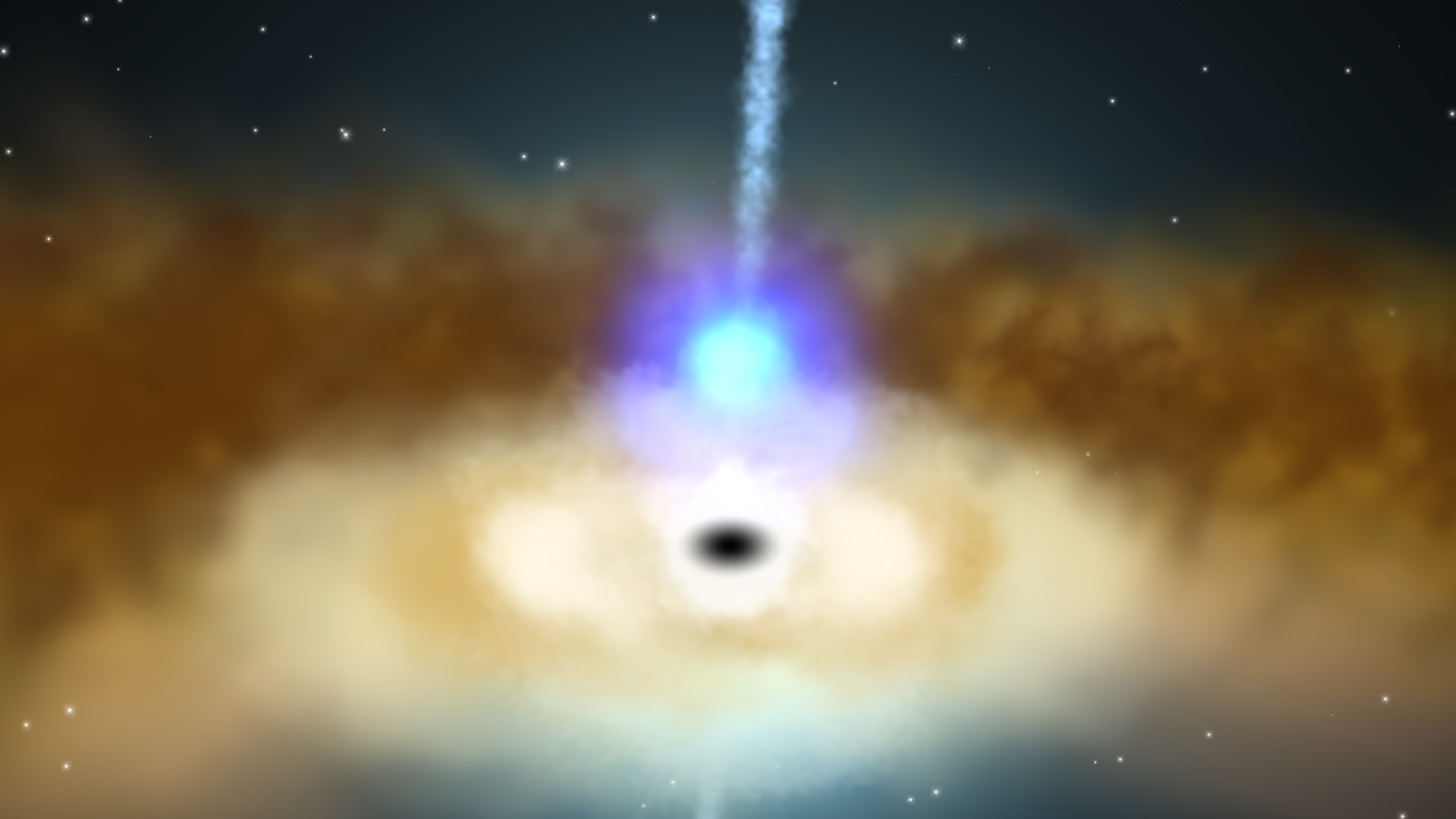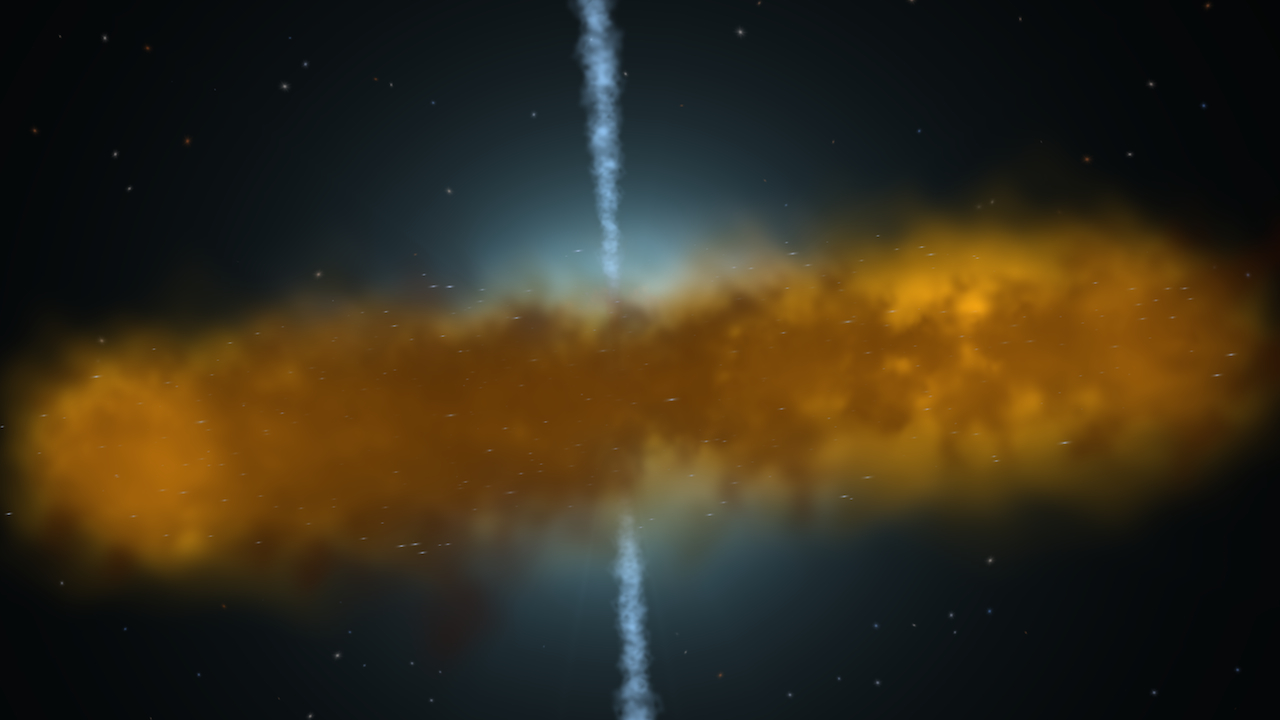The Cloudy Cores of Active Galaxies
At the hearts of most big galaxies, including our own Milky Way, there lurks a supermassive black hole weighing millions to billions of times the sun's mass. As gas falls toward a supermassive black hole, it gathers into a so-called accretion disk and becomes compressed and heated, ultimately emitting X-rays. The centers of some galaxies produce unusually powerful emission that exceeds the sun's energy output by billions of times. These are active galactic nuclei, or AGN.
Using data from NASA's Rossi X-ray Timing Explorer (RXTE) satellite, an international team has uncovered a dozen instances where X-ray signals from active galaxies dimmed as a result of a cloud of gas moving across our line of sight. The new study triples the number of cloud events previously identified in the 16-year archive.
The study is the first statistical survey of the environments around supermassive black holes and is the longest-running AGN-monitoring study yet performed in X-rays. Scientists determined various properties of the occulting clouds, which vary in size and shape but average 4 billion miles (6.5 billion km) across – greater than Pluto's distance from the sun — and twice the mass of Earth. They orbit a few light-weeks to a few light-years from the black hole.
Zoom into the cloudy heart of an active galaxy. This animation shows an artist's rendition of the cloudy structure revealed by a study of data from NASA's Rossi X-Ray Timing Explorer satellite.
Credit: NASA's Goddard Space Flight Center/Wolfgang Steffen, UNAM
Watch this video on the NASAgovVideo YouTube channel.
For complete transcript, click here.
This animation shows an artist's rendition of the cloudy structure revealed by a study of data from NASA's Rossi X-Ray Timing Explorer satellite.
Credit: Wolfgang Steffen, UNAM
This animation uses familiar weather symbols — sunny, partly cloudy, and mostly cloudy — to illustrate how our viewing angle alters the apparent total cloud cover of a supermassive black hole.
Credit: Wolfgang Steffen, UNAM
Because the clouds absorb low-energy X-rays more strongly than high-energy X-rays, astronomers can measure the total density of gas along the line of sight directly from RXTE spectra. This animation shows changes in X-ray spectra corresponding to the number of clouds present at any instant along our line of sight.
Credit: Wolfgang Steffen, UNAM
For More Information
Credits
Please give credit for this item to:
NASA's Goddard Space Flight Center. However, individual items should be credited as indicated above.
-
Animators
- Wolfgang Steffen (Instituto de Astronomia, UNAM)
- Scott Wiessinger (USRA)
-
Video editor
- Scott Wiessinger (USRA)
-
Producer
- Scott Wiessinger (USRA)
-
Writer
- Francis Reddy (Syneren Technologies)
Release date
This page was originally published on Wednesday, February 19, 2014.
This page was last updated on Wednesday, May 3, 2023 at 1:51 PM EDT.


